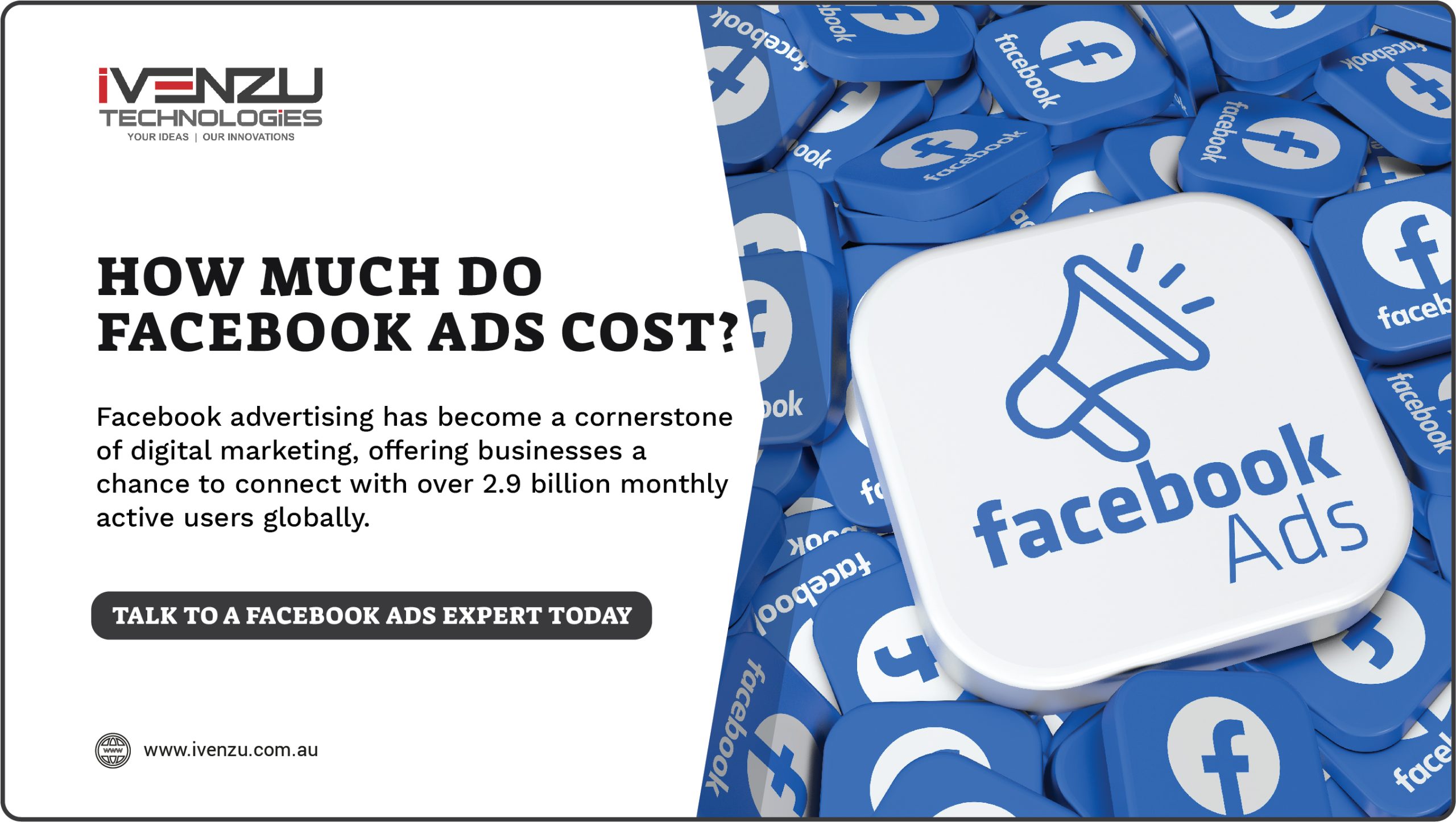How Much Do Facebook Ads Cost?
The Cost of Advertising on Facebook
Facebook advertising has become a cornerstone of digital marketing, offering businesses a chance to connect with over 2.9 billion monthly active users globally. Its sophisticated targeting options, diverse ad formats, and data-driven insights make it a powerful platform for driving brand awareness, lead generation, and sales. However, one question looms large for businesses considering Facebook advertising:

How much do Facebook ads cost?
The short answer is that Facebook ad costs vary widely depending on factors like your industry, campaign objectives, audience targeting, and bidding strategy. Facebook ads cost approximately $0.94 per click (CPC) and $12.07 per 1,000 impressions (CPM) globally. However, these figures are just benchmarks, and actual costs can be higher or lower depending on your specific campaign setup.
This comprehensive guide breaks down the factors influencing Facebook ad costs, explores pricing models, and provides actionable tips to optimize your budget. By understanding the costs and strategies behind Facebook advertising, you can create campaigns that deliver exceptional results without overspending.
1. What Determines Facebook Ad Costs?
Facebook uses an auction-based system to determine ad costs. When you create an ad, you compete with other advertisers targeting the same audience. The final cost is influenced by:
1.1 Your Target Audience
- Demographics: Younger audiences or affluent regions often cost more due to higher demand.
- Location: Ads targeting metropolitan areas are generally more expensive.
- Interests: Niche audiences with specific interests can have higher competition, raising costs.
1.2 Campaign Objective
Your selected objective—brand awareness, lead generation, conversions, etc.—affects your costs. Conversion-focused campaigns often cost more than those aimed at impressions or clicks.
1.3 Competition
Highly competitive industries like real estate, e-commerce, and finance typically experience higher ad costs.
1.4 Ad Placement
The cost of your ad varies depending on where it appears:
- Facebook Feed: Higher visibility, often with a higher price.
- Stories: Lower costs but require short-form, engaging content.
- In-Stream Videos: Premium placement with higher CPMs.
- Audience Network: Cost-effective but may yield lower engagement.
1.5 Ad Relevance and Quality Score
Facebook rewards highly engaging and relevant ads to their target audience with lower costs.
2. Facebook Ad Pricing Models Explained
Facebook offers multiple pricing models tailored to different campaign goals:
2.1 Cost-Per-Click (CPC)
- You pay for every click on your ad.
- Ideal for campaigns focused on website traffic or lead generation.
- Average CPC: $0.94 globally.
2.2 Cost-Per-Mille (CPM)
- You pay for every 1,000 impressions.
- Best for brand awareness campaigns.
- Average CPM: $12.07 globally.
2.3 Cost-Per-Action (CPA)
- You pay for specific actions like app installs, purchases, or form submissions.
- Average CPA: $18.68 globally.
2.4 Cost-Per-Like (CPL)
- You pay for each page like or follower gained through your ad.
- Average CPL: $1.07 globally.
3. Average Facebook Ad Costs by Industry
Ad costs vary significantly across industries. Here are some benchmarks for CPC and CPM:
| Industry | Average CPC ($) | Average CPM ($) |
| E-commerce | $0.70–$1.10 | $11–$14 |
| Technology | $1.20–$2.50 | $14–$18 |
| Real Estate | $0.80–$1.30 | $10–$13 |
| Healthcare | $1.00–$1.50 | $8–$12 |
| Finance | $2.00–$3.50 | $15–$25 |
| Travel and Hospitality | $0.60–$1.00 | $10–$14 |
| Education | $1.20–$1.80 | $10–$12 |
4. Factors That Influence Facebook Ad Costs
4.1 Seasonality
Ad costs typically rise during peak advertising seasons, such as Black Friday, Christmas, and other major shopping periods.
4.2 Ad Budget and Bidding Strategy
Higher budgets allow Facebook to optimize your ad performance better. The three bidding strategies include:
- Lowest Cost: Automatic bidding to maximize results within your budget.
- Target Cost: Ensures consistent average costs.
- Cost Cap: Sets a maximum cost for desired results.
4.3 Ad Frequency
Overexposing your ad to the same audience (high frequency) can lead to higher costs and reduced engagement.
4.4 Ad Format and Creative Quality
Visually engaging ads with strong CTAs and compelling messaging tend to perform better and cost less.
5. How to Reduce Facebook Ad Costs
5.1 Refine Audience Targeting
Avoid overly broad or narrow targeting. Use Facebook’s tools to create detailed audience segments.
5.2 Test Multiple Ad Creatives
Run A/B tests to determine which visuals, messaging, and formats resonate with your audience.
5.3 Leverage Retargeting Campaigns
Retarget users who’ve previously interacted with your brand for higher conversion rates at lower costs.
5.4 Optimize Ad Scheduling
Schedule your ads to run during peak times for your audience.
5.5 Use Lookalike Audiences
Expand your reach by targeting users similar to your existing customers.
6. Comparing Facebook Ad Costs to Other Platforms
Here is a quick comparison of Facebook ad costs with other major platforms:
|
Platform |
Average CPC ($) |
Average CPM ($) |
|
|
$0.94 |
$12.07 |
|
|
$1.00–$2.00 |
$5–$15 |
|
Google Ads |
$1.50–$2.50 |
$15–$25 |
|
|
$5.00–$7.00 |
$15–$30 |
|
TikTok |
$0.50–$1.00 |
$4–$9 |
Facebook’s competitive pricing, coupled with its advanced targeting options, makes it an excellent choice for advertisers across industries.
Your questions and answered
What is the average cost of a Facebook ad in 2025?
The average cost of a Facebook ad in 2025 is approximately $0.94 per click (CPC) and $12.07 per 1,000 impressions (CPM) globally. However, costs vary based on your industry, target audience, and campaign objective.
Which Facebook ad type is most cost-effective?
CPM (Cost-Per-Mille) ads are generally the most cost-effective for brand awareness, while CPC and CPA models are better for direct conversions but may come with higher costs.
Why are Facebook ad costs different by industry
Facebook ad costs vary by industry because competition, audience demand, and typical customer value differ. For instance, finance and tech sectors often have higher CPCs due to more advertisers bidding for the same audience.
How can I reduce my Facebook ad costs?
You can lower costs by refining your audience targeting, using A/B testing on creatives, retargeting engaged users, optimizing ad scheduling, and leveraging lookalike audiences.
Is advertising on Facebook still worth it in 2025?
Yes, Facebook advertising remains highly effective in 2025 due to its low average CPC, detailed targeting options, and wide user base. When optimized, it provides excellent ROI for businesses of all sizes.
What’s the difference between CPC, CPM, CPA, and CPL in Facebook Ads?
- CPC – You pay per click.
- CPM – You pay per 1,000 views.
- CPA – You pay per conversion (e.g., purchase).
- CPL – You pay per new page like/follower.
Each serves different goals and affects costs accordingly.
More Latest Blog
Comet Browser (AI Browser) The web is overflowing with tabs, logins, content, and chores. You open one article, then twenty more, copy...
What is a Software Service Company? A software service company is an organization that provides clients with specialized...
What is Quantum Computing and Why We Should Know? Quantum computing is an emerging technology that leverages the principles of quantum...
What is the Responsibility of an App Developer? A Comprehensive Guide With the ever-increasing reliance on technology, the role of an app...




